Related Research Articles

The Bristol Aeroplane Company, originally the British and Colonial Aeroplane Company, was both one of the first and one of the most important British aviation companies, designing and manufacturing both airframes and aircraft engines. Notable aircraft produced by the company include the 'Boxkite', the Bristol Fighter, the Bulldog, the Blenheim, the Beaufighter, and the Britannia, and much of the preliminary work which led to Concorde was carried out by the company. In 1956 its major operations were split into Bristol Aircraft and Bristol Aero Engines. In 1959, Bristol Aircraft merged with several major British aircraft companies to form the British Aircraft Corporation (BAC) and Bristol Aero Engines merged with Armstrong Siddeley to form Bristol Siddeley.

John William Dunne was a British soldier, aeronautical engineer and philosopher. As a young man he fought in the Second Boer War, before becoming a pioneering aeroplane designer in the early years of the 20th century. Dunne worked on automatically stable aircraft, many of which were of tailless swept wing design, to achieve the first aircraft demonstrated to be stable. He later developed a new approach to dry fly fishing before turning to speculative philosophy, where he achieved some prominence and literary influence through his "serialism" theory on the nature of time and consciousness, explained in his book An Experiment with Time.

Curtiss Aeroplane and Motor Company was an American aircraft manufacturer originally founded by Glenn Hammond Curtiss and Augustus Moore Herring in Hammondsport, New York. After significant commercial success in its first decades, it merged with the Wright Aeronautical to form Curtiss-Wright Corporation.
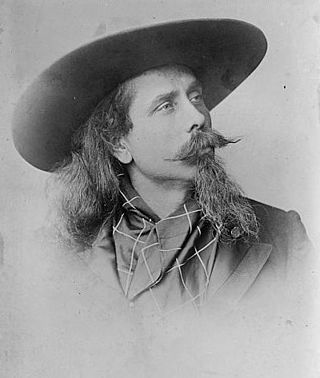
Samuel Franklin Cowdery was a Wild West showman and early pioneer of manned flight. He is most famous for his work on the large kites known as Cody War-Kites, that were used by the British before World War I as a smaller alternative to balloons for artillery spotting. He was also the first man to fly an aeroplane built in Britain, on 16 October 1908. A flamboyant showman, he was often confused with Buffalo Bill Cody, whose surname he took when young.
This is a list of aviation-related events from 1910:
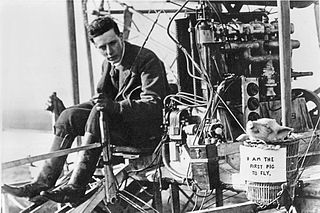
This is a list of aviation-related events from 1909:

The de Havilland DH.88 Comet is a British two-seat, twin-engined aircraft built by the de Havilland Aircraft Company. It was developed specifically to participate in the 1934 England-Australia MacRobertson Air Race from the United Kingdom to Australia.

The Ader Éole, also called Avion, was an early steam-powered aircraft developed by Clément Ader in the 1890s and named after the Greco-Roman wind god Aeolus.

An airplane or aeroplane is a fixed-wing aircraft that is propelled forward by thrust from a jet engine, propeller, or rocket engine. Airplanes come in a variety of sizes, shapes, and wing configurations. The broad spectrum of uses for airplanes includes recreation, transportation of goods and people, military, and research. Worldwide, commercial aviation transports more than four billion passengers annually on airliners and transports more than 200 billion tonne-kilometers of cargo annually, which is less than 1% of the world's cargo movement. Most airplanes are flown by a pilot on board the aircraft, but some are designed to be remotely or computer-controlled such as drones.

Early flying machines include all forms of aircraft studied or constructed before the development of the modern aeroplane by 1910. The story of modern flight begins more than a century before the first successful manned aeroplane, and the earliest aircraft thousands of years before.
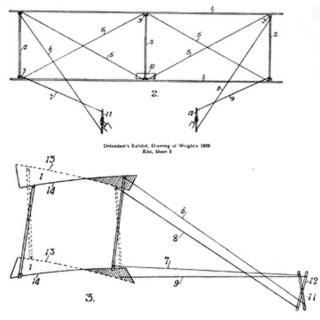
Wing warping was an early system for lateral (roll) control of a fixed-wing aircraft. The technique, used and patented by the Wright brothers, consisted of a system of pulleys and cables to twist the trailing edges of the wings in opposite directions. In many respects, this approach is similar to that used to trim the performance of a paper airplane by curling the paper at the back of its wings.

John Alexander Douglas McCurdy was a Canadian aviation pioneer and the 20th Lieutenant Governor of Nova Scotia from 1947 to 1952.
Captain Frank Sowter Barnwell OBE AFC FRAeS BSc was a Scottish aeronautical engineer. With his elder brother Harold, he built the first successful powered aircraft made in Scotland and later went on to a career as an aircraft designer with the Bristol Aeroplane Company, designing aircraft such as the Bristol Fighter, the Bulldog and the Blenheim.

The Boxkite was the first aircraft produced by the British and Colonial Aeroplane Company. A pusher biplane based on the successful Farman III, it was one of the first aircraft types to be built in quantity. As the type was used by Bristol for instruction purposes at their flying schools at Larkhill and Brooklands many early British aviators learned to fly in a Boxkite. Four were purchased in 1911 by the War Office and examples were sold to Russia and Australia. It continued to be used for training purposes until after the outbreak of the First World War.

College Park Airport is a public airport located in the City of College Park, in Prince George's County, Maryland, United States. It is the world's oldest continuously operated airport. The airport is located south of Paint Branch and Lake Artemesia, east of U.S. Route 1 and the College Park Metro/MARC station and west of Kenilworth Avenue.
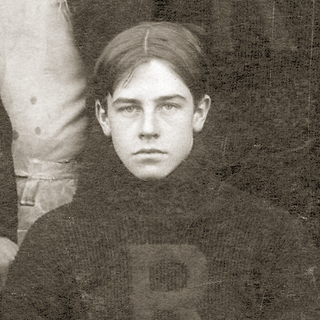
Frederick Walker Baldwin, also known as Casey Baldwin, paternal grandson of Canadian reform leader Robert Baldwin, was a hydrofoil and aviation pioneer and partner of the famous inventor Alexander Graham Bell. He was manager of Graham Bell Laboratories from 1909–32, and represented Victoria in the Nova Scotia Legislature from 1933–37, where he was instrumental in bringing about the creation of Cape Breton Highlands National Park. In 1908, he became the first Canadian and British subject to fly an airplane.

Aéroplanes Voisin was a French aircraft manufacturing company established in 1905 by Gabriel Voisin and his brother Charles, and was continued by Gabriel after Charles died in an automobile accident in 1912; the full official company name then became Société Anonyme des Aéroplanes G. Voisin. During World War I, it was a major producer of military aircraft, notably the Voisin III. After the war Gabriel Voisin abandoned the aviation industry, and set up a company to design and produce luxury automobiles, called Avions Voisin.
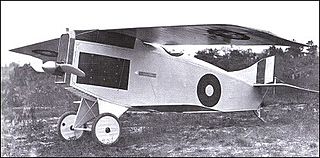
The Christmas Bullet, later known as the Cantilever Aero Bullet, was an American single-seat cantilever wing biplane. It is considered by many to be among the worst aircraft ever constructed.
Brown Aeronautical Company was an American aircraft manufacturer in the pioneering era of flight between 1900 and 1914.

William Whitney Christmas, M.D. was a physician, pioneer aviator, and supposed con man. He was one of many claimants for an early design of the aileron. He was a vice-president of the General Development Corporation.
References
- ↑ "Christmas Aeroplane Company" . Retrieved 9 December 2012.
- ↑ Aerial Age: 335. 29 May 1916.
{{cite journal}}: Missing or empty|title=(help) - ↑ Thomas C. Parramore. First to Fly: North Carolina & the Beginnings of Aviation .
- ↑ Spencer Heath (October 1910). "Propeller Design and Construction". Aeronautics: 112.